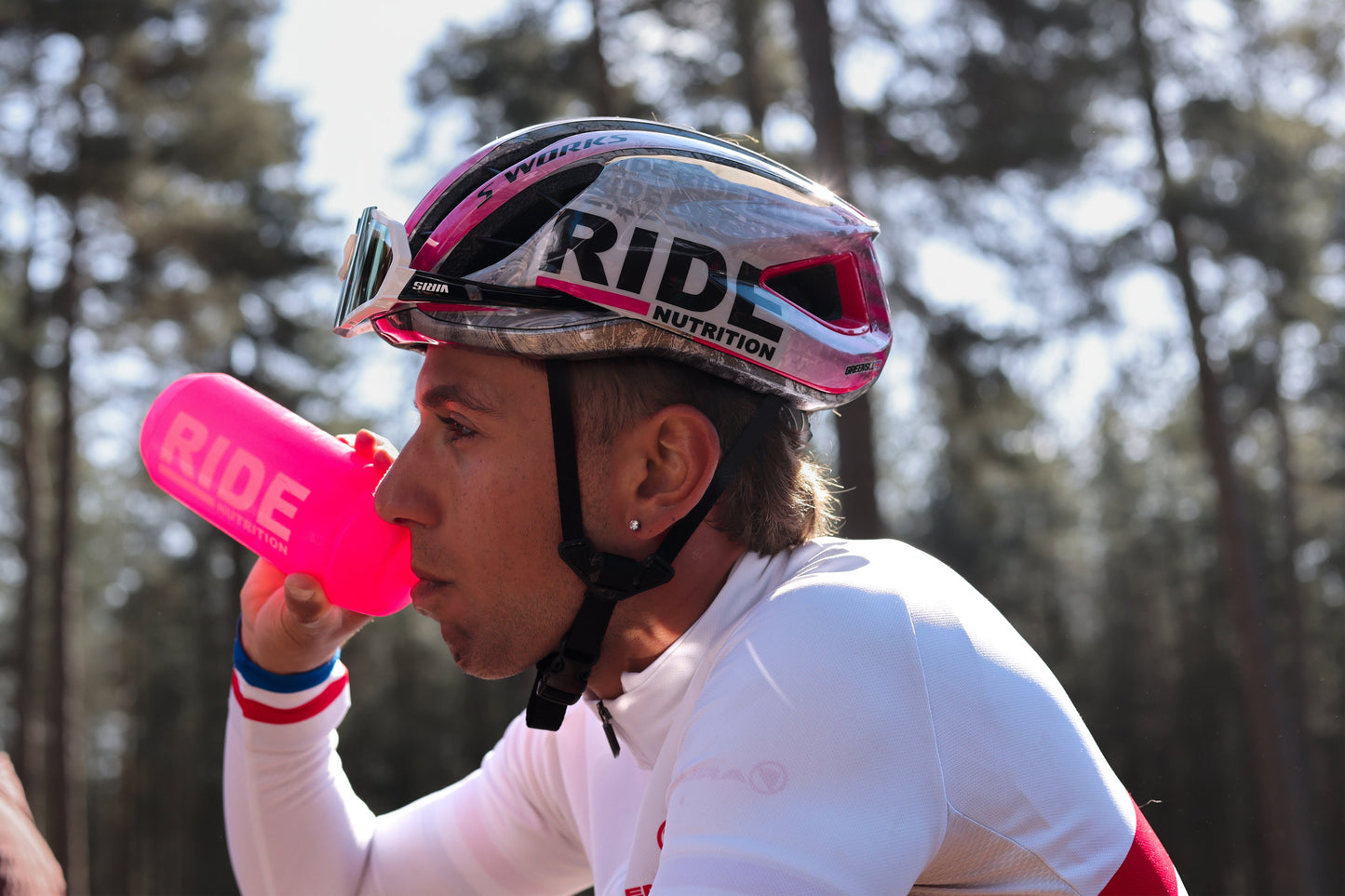
Let's start with thermoregulation
As humans we thermoregulate, this means our bodies are continually working to keep our core temperate within strict bounds. As many of you may know, the body’s resting core temperate is 37°C. During exercise we often see a rise in the body’s core temperature to between 38-40°C.
How is the body able to lose heat during exercise?
- Radiation - Electromagnetic heat waves emitted.
- Convection - Heat loss through movement of air and water.
- Conduction - Transfer of heat between molecules.
- Evaporation - Evaporation of sweat. (Major method of heat loss).
The majority of heat being dissipated during exercise is through the evaporation of sweat from the skins surface. As core body temperature increases during exercise, the hypothalamus (a portion of the brain) detects this.
As a result we see vasodilation (widening) of the blood vessels close to the skins surface, thus increasing peripheral blood flow to promote heat loss away from the body’s core via convection. This increase in blood flow to the periphery places extra stress on the heart as it still has to ensure sufficient blood flow to the organs and working muscles during exercise.
Concurrent with vasodilation, it’s the activation of eccrine sweat glands that eventually causes sweat to be released onto the skins surface. Skin temperature is reduced by the evaporation of sweat from its surface, thereby cooling the blood within the dilated blood vessels nearest to the skins surface before it returns to the core.
What is sweat and where does it come from?
Sweat comes from intra and extra cellular fluid in cells and plasma, and is made of mostly water and the electrolytes Sodium and Chloride. Although the most concentrated solute in sweat is Sodium Chloride, there are also smaller amounts of potassium, magnesium and calcium present.
Why water and electrolytes are crucial for performance
- To maintain blood volume and osmolality to transport oxygen around the body.
- To regulate temperature via sweating.
- To remove waste products and toxins from the body (through urine).
- To carry out homeostasis and metabolic functions.
- To ensure shock absorbing / lubricating functions (synovial fluid within joints).
- To allow neural conduction and muscle function (emphasis on Potassium and Sodium).
- To allow for muscle glycogen recovery.
Looking for a great tasting electrolyte supplement? Explore our Hydro Fizz Electrolyte range!
Sweat loss, dehydration and performance decrements
As sweat rates increase in line with exercise intensity we often see a reduction in blood plasma volume which in turn results in an increased viscosity (thickening) of the blood. The heart then has to work much harder to pump this viscous blood around the body to deliver oxygen to the working muscles, which in turn effects the intensity at which we are able to perform at.
As the body becomes dehydrated, we see a reduction in sweat rates in an attempt to save water and maintain blood plasma volume. As a result it becomes increasingly hard for the body to lose heat via evaporation and therefore core temperature will likely rise thus increasing sensations of fatigue which will have a negative impact on performance.
Additionally when exercising in a dehydrated state, we see an increased rate of muscle glycogen use due to a greater catecholamine response. As you exercise, your body breaks down glycogen into glucose for energy. Once these muscle glycogen stores are depleted we will likely see a decrease in performance due to the onset of fatigue.
Essentially, as we become dehydrated our heart rate increases, muscle glycogen depletion rates increase and body temperature rises. This means we have to work harder to perform at any given exercise intensity compared to when in a fully hydrated state.
Practical recommendations
Before Exercise
- Avoid Excessive water intake. Sodium concentrations can become diluted to a deadly level causing hyponatremia (essentially drowning the body).
- Slowly consume 5-10 ml per kg of body mass of an electrolyte rich drink 2-4 hours prior to exercise (We recommend our Hydro Fizz Electrolyte Range)
- Check your urine colour to measure hydration status (aim for a very slight pale yellow).
During Exercise
- This is dependent on the individual, activity and conditions in question.
- Despite being hard to practise, the following general guideline can be applied : A volume of fluid (supplemented with electrolytes) should be drank to avoid >2% loss in body mass during exercise.
- In order to set out individual hydration plans, individual sweat rates must first be calculated. Click here to find out more.
After Exercise
- Depending on the severity of dehydration post exercise, it can take from 4 to 24 hours to reach a hydrated state of normal fluid balance.
- In order to rehydrate after exercise we recommend 1.25-1.50L of fluid to be consumed for every 1kg of body mass lost. Sodium intake can help retain water by minimising water loss through urine, therefore the consumption of salty foods / electrolyte rich fluids is also advised.
- Additionally, alcohol should be avoided after exercise due to its diuretic effects. (Diuretic effects meaning increased urine production and therefore increased water loss which further disrupts fluid balance).
If you're you're still looking for a high strength Electrolyte tablet that doesn't give you the dreaded salty aftertaste, make sure to check our taste focused Hydro Fizz Electrolyte tablets here.

